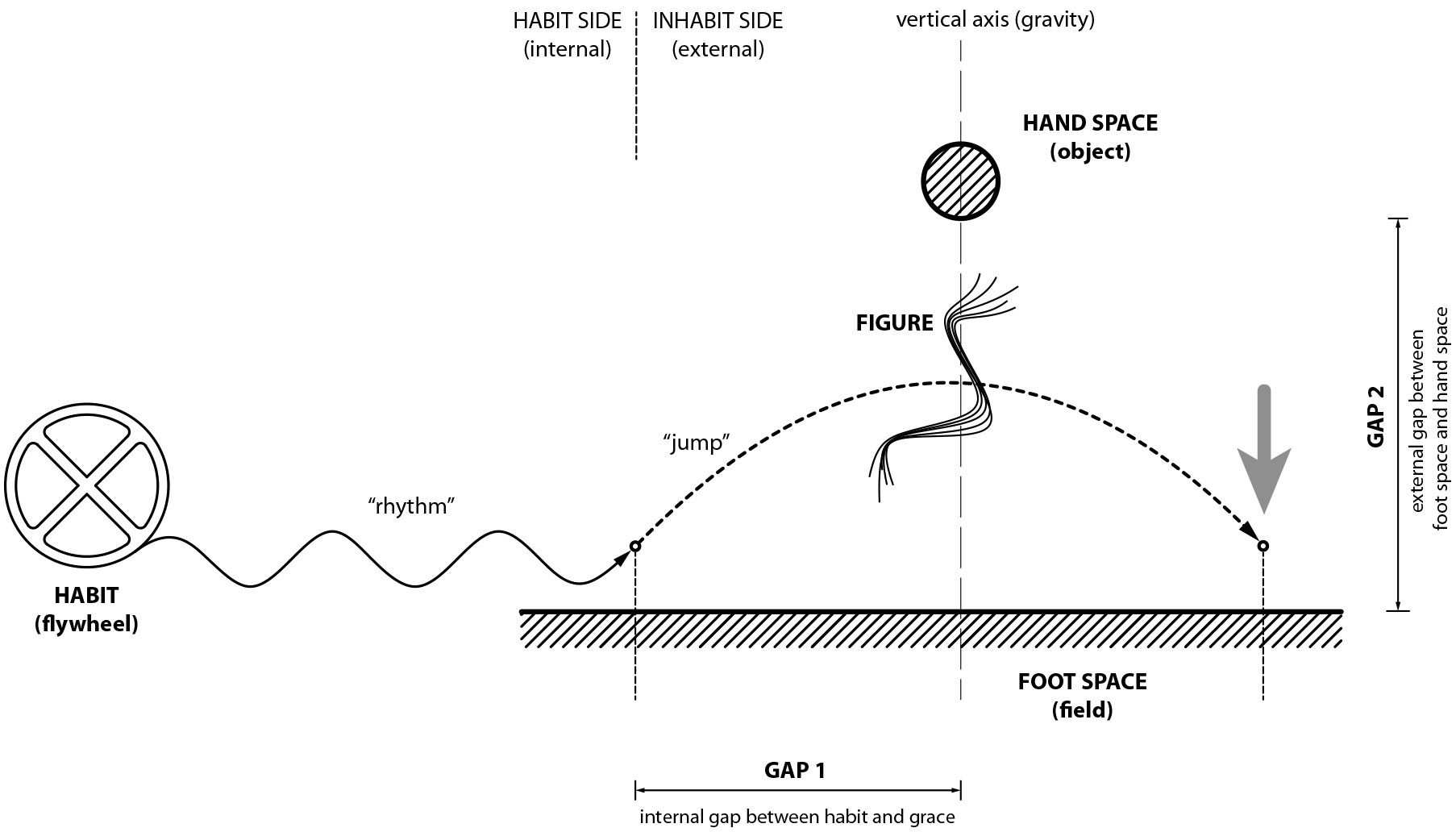
What is a “grace machine”? And why is it possible to speak of a grace machine while grace seems utterly alien to the traditionally linear logic of machines? When studying the history of grace, be it from a sociological, religious or aesthetic viewpoint, the concept of grace seems to be quite precisely defined. In sociology it is question of manners, of elegance or nonchalance, while in religion it is purely transcendent, descending from heaven in an either resistible or irresistible fashion. In aesthetics it has been associated with, among others, Vitruvian venustas, Winckelmann’s grazie, or Schiller’s Anmut—often with insurmountable differences between them. We are following another trajectory, a trajectory that does not exclude the above-mentioned definitions, but includes each of them by deliberately evading the influence of the various disciplines and seeking an integrated approach that will allow us to build our machine.
Yet, the more the parts are defined the more elusive the figure of grace seems to become. On the one hand, the machine starts to acquire a temporal side of habits, automatism and internal rhythms, relations that have famously been laid out by Samuel Butler, Félix Ravaisson, Paul Souriau or Herbert Spencer. Yet, we find only partial agreement with these theories: while grace strongly depends on habit, it also breaks away from it. On the other hand, where the figure of grace meets its spatial conditions, we encounter a similar breaking: space is not that container structured by Cartesian coordinates happily receiving moments of grace; space itself breaks in two.
Space is broken: on one side we encounter fields, smooth as asphalt or ice, yet at the same time precisely tessellated by the lines we find on a football pitch, tennis court or chess board. Nothing is more strict and serious than play. The space of the field is constantly interrupted as to evoke figuration: jumps, loops, moves, hits and shots. On the other side we encounter objects, balls, pieces; a whole range of graspable things that are in pure disharmony with the field. Only grace and figuration can bridge the two. The grace machine is constructed of very precise elements that relate to each other from a horizontal side of time and rhythms and a vertical side broken between objects and fields; yet a horizontal and a vertical that do not intersect, that leave a gap in which the figure of grace appears.
Introduction Part I: Gift
Via Mauss’s definition of the gift as both non-free and as a force of things we arrive at a circular logic of giving and having that forms the structure of grace, generosity and gratitude. The Three Graces show us the aesthetic basis of gift exchange, yet also the powers of flexibility, vagueness and posture. Edmund Burke’s strangely paradoxical definition of grace as “posture and motion” becomes the heart of our grace analysis, accepting both the horizontality of movement and the verticality of stance. It is in this turning from one to the other that we encounter the figure.
Via Mauss’s definition of the gift as both non-free and as a force of things we arrive at a circular logic of giving and having that forms the structure of grace, generosity and gratitude. The Three Graces show us the aesthetic basis of gift exchange, yet also the powers of flexibility, vagueness and posture. Edmund Burke’s strangely paradoxical definition of grace as “posture and motion” becomes the heart of our grace analysis, accepting both the horizontality of movement and the verticality of stance. It is in this turning from one to the other that we encounter the figure.
Introduction Part II: Machine
When limbs play such a crucial role in the figure of grace, what does that mean for our relationship with machines? Yes, machines are prosthetic, but only after we have established a mimetic relationship with them: we have to become car-like to drive a car. Grace relies on automatisms, but it is not automatic. Grace is never a form of pure flow: it occurs between the classic notions of schēma and rhythmos, linking the verticality of the one with the horizontality of the other. This structure we encounter in sports, play and games: the rigorous subdivision of the field or game board can only be met by the object of the game via figuration. At this point, time turns into timing and space into room.
When limbs play such a crucial role in the figure of grace, what does that mean for our relationship with machines? Yes, machines are prosthetic, but only after we have established a mimetic relationship with them: we have to become car-like to drive a car. Grace relies on automatisms, but it is not automatic. Grace is never a form of pure flow: it occurs between the classic notions of schēma and rhythmos, linking the verticality of the one with the horizontality of the other. This structure we encounter in sports, play and games: the rigorous subdivision of the field or game board can only be met by the object of the game via figuration. At this point, time turns into timing and space into room.
